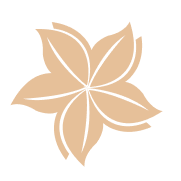Homeopathy is an energetic system of medicine that stimulates the body’s natural healing powers to bring rapid, gentle healing and doesn’t interact with anything else and has zero side effects.
Homeopathy is a 200-year-old method of healing, and its main principle is ‘like for like cure’ where observing certain laws of nature and looking for similar pictures of the world around us. That includes plants, earth elements, nosodes, sarcodes, crystals and other remedies which match the physical and mental state of the patient and prescribed to stimulate the vital force in each body to perform self-healing.
Homeopathy seeks to find the causes of disease, and nature’s way to return the body to health. Naturally occurring, energised medicines are then used as treatment.
Homeopathic remedies are prescribed in various potencies X; C; M; LM; CM to match the current state of the patient. They are prescribed as a single remedy or mix in various repetitions.
Homeopathy is the second most widely used system of medicine in the world today. Used by over 200 million people on a regular basis, in more than 50 countries.
The discovery brief assessment of whether Homeolistics is right for you and your healing journey. Following that we recommend that you commit to a minimum of three paid consultations, one every six weeks. The first being two hours and the following being 1 hour follow up sessions. In those consultations, together we will build an accurate and in depth personal profile of your physical, mental, emotional and energetic current state. This will lead to a bespoke treatment plan to address acute or chronic conditions. We recommend that at least the initial consultation be conducted in person.

Hopi Ear Candling is an ‘ancient therapy’ which offer relief from hearing issues such as compacted earwax and tinnitus. During treatment, patients lay on their side on a couch before a Hopi ear candle is put into the ear, lit and held in place for around ten minutes. It is believed that the candles vaporise their ingredients and cause mild suction in the ear, which massages the ear drum and ear canal and draws out impurities. After the candle burns down and is removed, a cotton swab is used to clean visible ‘wax’ from the ear.
Hopi Ear Candle Wax treatments are always recommended to be performed on healthy and uninfected ears.
This session is an ancient eastern energy practice for energy cleansing and rebalancing as a result of stress, shock or trauma. The treatment is non-invasive and the patients lay on their backs while the therapies gently massage the forehead; solar plexus and feet of the patient.

These are block sessions for an employer who is interested in the value added benefit of employee health assessments. These include individual bio resonance tests with 3 out of 43 tests discussed in detail and a written report provided with recommendations. Homeopathy consultations are available after the bio resonance tests.

These are organised 2 times a year around Spring and Autumn Solstice.

These are hour-long training and information sessions every first Friday of the month for anyone who is interested in learning a bit about homoeopathy and how it helps the body to heal itself.
There are tailored training organised through the year as well on subject driven by patients interests.

Allopathy is ‘mainstream’ medicine that employs chemicals and crude doses. A common example of an allopathic medicine is Panadol (paracetamol) – a drug used to reduce fevers. The chemical effect of Panadol lowers your temperature in about half an hour. However, once it leaves your body, the fever returns, necessitating another dose.
Most medicines purchased from a pharmacy function similarly – they alleviate or eliminate symptoms while in your body, but symptoms return once the dose wears off.
Both homeopathy and allopathy aim to relieve suffering and restore health.
While homeopathy is based on the ‘Law of Similars’, allopathic drugs are prescribed to counteract symptoms. For instance, allergy is treated with antihistamine drugs – they produce the opposite effect of the symptom being treated. Prescribing by opposites only suppresses symptoms temporarily and never truly cures them. As the medicine’s effect wears off, the problem returns, often worse, as the body gradually becomes resistant to these drugs.
In contrast, homeopathy employs ‘similars’ to stimulate the body to heal its own symptoms. Histamine in our example above is chosen for their ability to mimic rather than counteract the symptoms of the unwell person. This stimulating approach, rather than suppressive, prompts a rebound effect from the body, leading to restored health.
Another difference between allopathy and homeopathy is that allopaths treat various symptoms as separate diseases even if they occur in the same person. For instance, recurrent migraines and diarrhea would be treated with two distinct allopathic medicines. Homeopathy, however, considers these problems as part of an overall disorder to be treated as a single illness with one remedy at a time.
Lastly, allopathic medicines pose more risks than homeopathic remedies. Since allopathic medicines are chemically based, patients risk drug interactions and toxic side effects. In contrast, homeopathy uses energetic remedies that do not cause chemical side effects, poisoning, or interactions with other medications
Dr. Edward Bach believed that negative emotions impact our physical health, and in the early 1900s, he developed 38 flower remedies to rebalance these emotions, enabling the body to return to health
Bach Flowers and other flower remedies resemble homeopathy in that they are energy medicines, not relying on chemicals for their effects. They are non-toxic and safe for everyone, from the young to the elderly, expectant mothers, and even pets or animals. They share a similar taste with liquid homeopathic remedies, making them pleasant to use and easy to take.
Flower remedies have weaker and gentler effects than homeopathic remedies and primarily target mental emotional state in people. In contrast, homeopathy addresses physical and emotional aspects simultaneously. Since flower remedies have not undergone standard homeopathic provings (trials), it is unclear whether they work by suppressing symptoms through the Law of Opposites or curing them through the Law of Similars.
Tissue salts, also known as Biochemic remedies, celloids, or cell salts, were developed in the 1800s by a German homeopath named Schuessler. He believed that deficiencies in one or more of these 12 salts led to disease and that these salts would be more easily absorbed if prepared as weak homeopathic potencies.
Tissue salts, often mistaken for supplements, are actually weak homeopathic remedies. The amount of salt in each remedy is too small for any nutritional benefit. Prepared in low potencies (6X or 12X) from the decimal potency scale, they are non-toxic and safe like all homeopathic remedies. However, they should be used only when symptoms are present and not taken continuously like supplements.
Tissue salts have a more limited action compared to other homeopathic remedies. Prepared only in low potencies, they may not act deeply enough to impact chronic disease or mental-emotional symptoms. In contrast, other homeopathic remedies (with thousands available) come in various potencies that can address deep-rooted chronic issues and simple complaints, offering more options with homeopathy.
Proper nutrition is essential for good health. An inadequate diet, poorly absorbed nutrients, or stress-induced nutrient depletion can contribute to infectious diseases, poor healing, chronic health problems, mood swings, and depression.
While artificial supplementation may provide some help, it is not a complete solution. Adopting a nutritious diet, eliminating stressors, and addressing the causes of malabsorption leads to true long-term improvement. Megadoses of vitamins and minerals only mask the underlying problem or create new issues by disrupting the body’s biochemistry.
Both supplementation and homeopathic treatment aim to restore the body to a state of “balance.” Homeopathic treatment often includes advice on nutrition and lifestyle changes
Supplements address illness superficially, whereas homeopathy works at a deeper energetic level. In many cases, poor absorption, health issues, food cravings, and aversions result from an imbalance in this energy. This is why some individuals develop “nutritional” problems despite an adequate diet, while others do not. In these cases, homeopathy can help where supplements cannot.
Herbal medicine is as old as humanity itself and uses the medicinal properties of raw plants, or the teas and tinctures prepared from them, to treat symptoms of disease.
Some herbs heal by the “Law of Similars” and some suppress by “opposites”. Those that treat by similars work better if given in homeopathic potencies. Two examples are: Urtica Urens (stinging nettle), used herbally for allergic eczema and diminished milk flow, and Cineraria Maritima that resolves eye problems such as conjunctivitis. Both of these herbs treat with greater speed and effect if given in homeopathic potencies. Many herbalists are unaware of this homeopathic relationship even though many other examples exist.
While gentler than many conventional medicines, herbs still have chemical effects that can poison the body or interact with conventional drugs. When prepared as homeopathic potencies they are free of these problems. Another notable difference is that most herbal remedies taste awful. This makes it difficult to coax children, and even some adults, into taking their medicine. In contrast, homeopathic remedies are dispensed as pleasant tasting sugar pilules or water.
People often ask what the difference is between naturopathy and homeopathy. Homeopaths are specialists whereas naturopaths are generalists. Naturopathy is an eclectic practice that draws from a range of therapies. Originally, naturopathy used “drugless” lifestyle approaches like diet, exercise, fresh air, pure water, sunshine, and massage. Today, it may include other therapies such as herbs, homeopathy, supplements, flower remedies, energy work, aromatherapy, and more. Each naturopath will have his or her own preferences for treatment.
Naturopaths have received introductory training in homeopathy and can prescribe homeopathic remedies for simple acute complaints or first aid situations. Unless they have undertaken further studies in homeopathy, naturopaths are not qualified to treat long term or chronic problems homeopathically
A naturopath is taught ‘a little of many things’ over a 3-year full-time course (4 years for a bachelor qualification). A homeopath studies only homeopathy and related subjects in their 3-year full-time course (4 years for a bachelor). Your homeopath is qualified to treat the full range of acute and chronic disorders with homeopathy, while your naturopath is not.
While many of the above therapies are useful in themselves, none have the breadth and depth of homeopathy. Some focus only on mental and emotional problems while others deal with just the physical. Most work by palliation or suppression while some, such as herbal medicine, may occasionally apply the homeopathic effect by accident.
By contrast, homeopathy can be systematically applied at a deep energetic level to heal mental, emotional and physical symptoms of ill-health. Its remedies are non-toxic, do not interact with other medications, and taste great. Everyone and anyone can use them. Homeopathy is truly a remarkable system of medicine.
There have been several scientific studies done over the last few years that demonstrate the effectiveness of homeopathy.
If you are interested in the evidence, please check these out for some scientific proof:
http://www.hri-research.org/resources/homeopathy-the-debate/essentialevidence/ https://www.extraordinarymedicine.org/
https://www.facultyofhomeopathy.org/research
https://pubmed.ncbi.nlm.nih.gov/16296912/
Every single treatment is beneficial at a specific time in your healing process, providing it is delivered with love, good intentions, and care for mutual growth. Healers, as well as patients, will exchange more than the energy of an encounter, they will both serve as teachers to each other. The essence is to recognise where you are on your health journey, and that starts with a consultation, from there we can discuss the next steps that you feel comfortable with in your healing journey.
This initial consultation is very important to a homoeopath. It is all about learning about you and all areas of your life to see how the multiple factors have culminated in the present. Personal history, lifestyle, emotional stress and mental attitude all play a part. Like a medical detective picking up clues, a treatment plan is then individually designed to achieve the best results.
This is a time for talking about what is troubling you, your pains and aches, your family medical history, your family relationships, your thoughts and your personal traumas and for gaining an understanding of how you arrived in this condition. This is a time for questions, exploration, and realisations. The first consultation involves a longer talking time to take a full case history and initial analysis which may take up to 1,5-2hrs.
A course of treatment commonly involves working through various ‘layers’ of personal history over a period of months, sometimes years. The more recent is the onset of a condition the easier it is to heal, while a more long-term situation will take longer. An initial series of four sessions is recommended. After that expect the situation to be reassessed if further sessions are required. There is normally four to six weeks between appointments.
Find our full price lists here (link to fee structure)
A bioresonance test is a non-invasive test which is performed while you hold a metal bar for a minute which is connected to a software that will read, record and analyse the energy frequencies of a number of your body systems and body organs. The test will result in creating over 40 very comprehensive test results regarding areas of immediate health issue or underlying ones in the short. Medium and long term.
Patients are provided with a diary to record any improvements; any relapses; appearance of old symptoms or new ones. We will back it up with a bioresonance test for recording of the progress by comparing initial test results with the results after 6 months of treatment.
Anytime a remedy or conventional medicine is given in overdose, it will produce side-effects.
If this were not so, homeopathy could not conduct its pathogenic trials (more commonly known by as ‘provings‘).
The difference between chemical side-effects from conventional medicines and the energetic side-effects of homeopathic remedies is that energetic effects are usually minor and do not harm, poison or create addiction.
They just indicate that the remedy has been given in too large a dose, too often, or in an unsuitable potency. Once the remedy is stopped, they disappear.
As a positive, they are credited with having a strengthening effect on the person’s vitality.
A skilled homeopath not only seeks to prescribe the right remedy but also in the right potency, the right size of dose, and at the right frequency for the person’s sensitivity to avoid unwanted effects.